
The almond is a species of small tree from the genus Prunus, cultivated worldwide for its seed, a culinary nut. Along with the peach, it is classified in the subgenus Amygdalus, distinguished from the other subgenera by corrugations on the shell (endocarp) surrounding the seed.

Kiwifruit or Chinese gooseberry is the edible berry of several species of woody vines in the genus Actinidia. The most common cultivar group of kiwifruit is oval, about the size of a large hen's egg: 5–8 centimetres in length and 4.5–5.5 cm in diameter. It has a thin, fuzzy, fibrous, tart but edible light brown skin and light green or golden flesh with rows of tiny, black, edible seeds. The fruit has a soft texture with a sweet and unique flavour.
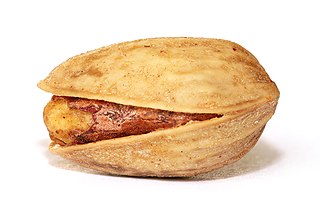
The pistachio, a member of the cashew family, is a small tree originating in Persia (Iran). The tree produces seeds that are widely consumed as food. The word can be countable or uncountable.

Rambutan is a medium-sized tropical tree in the family Sapindaceae. The name also refers to the edible fruit produced by this tree. The rambutan is native to Southeast Asia. It is closely related to several other edible tropical fruits, including the lychee, longan, pulasan, and quenepa.

The avocado is a medium-sized, evergreen tree in the laurel family (Lauraceae). It is native to the Americas and was first domesticated in Mesoamerica more than 5,000 years ago. Then as now it was prized for its large and unusually oily fruit. The tree likely originated in the highlands bridging south-central Mexico and Guatemala. Its fruit, sometimes also referred to as an alligator pear or avocado pear, is botanically a large berry containing a single large seed. Sequencing of its genome showed that the evolution of avocados was shaped by polyploidy events and that commercial varieties have an hybrid origin. Avocado trees are partly self-pollinating, and are often propagated through grafting to maintain consistent fruit output. Avocados are presently cultivated in the tropical and Mediterranean climates of many countries. Mexico is the world's leading producer of avocados as of 2020, supplying nearly 30% of the global harvest in that year.
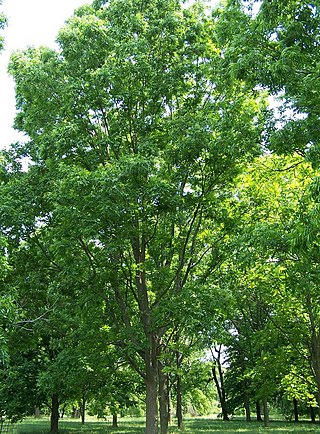
The pecan is a species of hickory native to the southern United States and northern Mexico in the region of the Mississippi River.
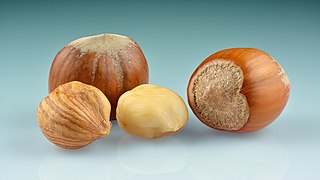
The hazelnut is the fruit of the hazel tree and therefore includes any of the nuts deriving from species of the genus Corylus, especially the nuts of the species Corylus avellana. They are also known as cobnuts or filberts according to species.

Juglans regia, the Persian walnut, English walnut, Carpathian walnut, Madeira walnut, or, especially in Great Britain, common walnut, is an Old World walnut tree species native to the region stretching from the Balkans eastward to the Himalayas and southwest China. It is widely cultivated across Europe and the Caucasus.

Ziziphus mauritiana, also known as Indian jujube, Indian plum, Chinese date, Chinee apple, ber and dunks is a tropical fruit tree species belonging to the family Rhamnaceae. It is often confused with the closely related Chinese jujube, but whereas Z. jujuba prefers temperate climates, Z. mauritiana is tropical to subtropical.

A pumpkin seed, also known in North America as a pepita, is the edible seed of a pumpkin or certain other cultivars of squash. The seeds are typically flat and oval with one axis of symmetry, have a white outer husk, and are light green in color after the husk is removed. Some pumpkin cultivars are huskless, and are grown only for their edible seed. The seeds are nutrient- and calorie-rich, with an especially high content of fat, protein, dietary fiber, and numerous micronutrients. Pumpkin seed can refer either to the hulled kernel or unhulled whole seed, and most commonly refers to the roasted end product used as a snack.

Canarium ovatum, the pili, is a species of tropical tree belonging to the genus Canarium. It is one of approximately 600 species in the family Burseraceae. C. ovatum are native to the Philippines. They are commercially cultivated in the Philippines for their edible nuts and is believed to be indigenous to that country. The fruit and tree are often vulgarized with the umbrella term of "Java almond" which mixes multiple species of the same genus, Canarium.

An orange is a fruit of various citrus species in the family Rutaceae ; it primarily refers to Citrus × sinensis, which is also called sweet orange, to distinguish it from the related Citrus × aurantium, referred to as bitter orange.
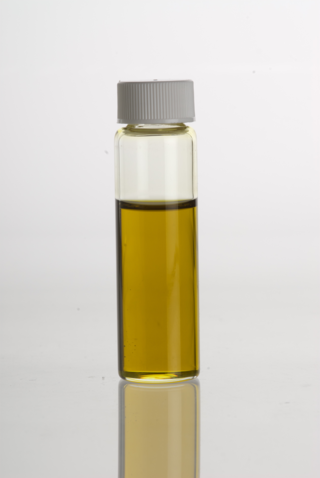
Avocado oil is an edible oil extracted from the pulp of avocados, the fruit of Persea americana. It is used as an edible oil both raw and for cooking, where it is noted for its high smoke point. It is also used for lubrication and in cosmetics.
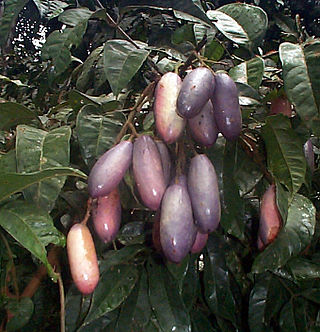
Dacryodes edulis is a fruit tree in the Burseraceae family native to Africa. Its various regional names include safou, plum (Cameroon), atanga, ube, elumi (Nigeria), African pear, bush pear, African plum, nsafu, bush butter tree, or butterfruit.
Rudolph Gustav Hass was an American mail carrier and amateur horticulturist who first grew the Hass avocado, the source of 95% of California avocados grown commercially today.
The Brogdenavocado is a named cultivar of avocado that originated in Florida.

Avocado production is important to the economy of Mexico with the country being the world's largest producer of the crop. Mexico supplies 45 percent of the international avocado market. Of the 57 avocado producing countries, the other major producers are Dominican Republic, Peru, Colombia, and Indonesia, in that order.

Phulwara oil is extracted from seeds of Phulwara tree. Phulwara Trees are also known locally as Chiuri Trees, Kaeleb Trees, or Butter Nut Trees. Refined Phulwara Oil is marketed as Phulwara Ghee.
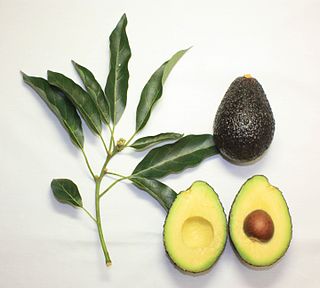
Maluma is a commercial cultivar of avocado that was discovered in South Africa. It is marketed simply as 'Maluma', but sometimes also as 'Maluma Hass' referring to its similarity in appearance to the well-known Hass cultivar. Its name originated from the fact that it was discovered by Mr. Dries Joubert, a farmer from Levubu in South Africa, on his farm 'Maluma'.
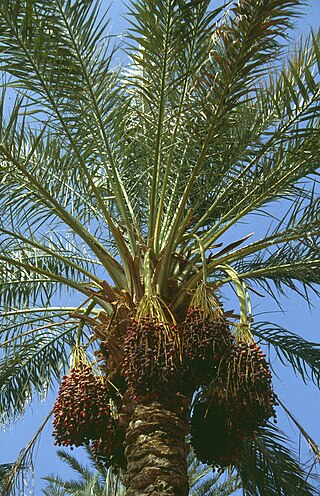
Mazafati is a cultivar of the palm date. It is a dark, soft, fleshy and sweet date of medium size, about 2.5–4.5 cm (1–2 in) with a relatively high moisture content of between 32 and 35%, varying with the time of harvest and the location of the grove.



















